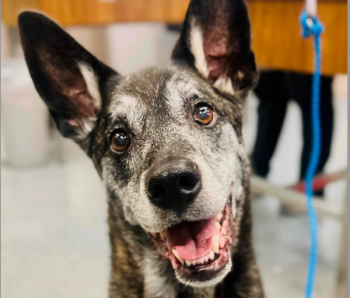
Image quiz: Whats going on with these dogs skin?
Recurrent, multidrug-resistant skin infections that present with scaling and ulcerated, crusting lesions are signs of this condition.
Images courtesy of Dr. Brooke Britton.
These two dogs share the same condition, characterized by several weeks' to months' duration of multidrug-resistant, recurrent skin infections, with diffuse scaling and ulcerated, crusting lesions over the trunk and ventral abdomen, accompanied by intense pruritus. Which skin condition do you suspect looking at these images?
Cutaneous histiocytosis
Cutaneous lymphoma
Cutaneous mastocytosis
Hepatocutaneous syndrome
The answer is: B. Cutaneous lymphoma
The skin biopsy confirmed cutaneous lymphoma, which is a rare variant of lymphoma and is usually multifocal to generalized in the distribution of skin lesions. Secondary skin infections are common, and the diagnosis is often delayed as the condition mimics more common dermatologic conditions in the disease's beginning phases. Tumors can occur as nodules, plaques, ulcers, and erythemic or exfoliative dermatitis, and they are often accompanied by intense pruritus.
Epitheliotropic lymphoma (occasionally referred to as mycosis fungoides) is a cancer of T-lymphocyte origin and has three distinct stages: progressing from 1) scaling, alopecia and pruritus to 2) thickened, exudative, ulcerated lesions to 3) diffuse plaque-like or nodular lesions with severe ulceration. Nonepitheliotropic lymphoma spares the epidermis and primarily affects the middle and deep portions of the dermis and subcutis. Oral (mucocutaneous) involvement can also occur.
In the terminal phases of cutaneous lymphoma, progression in lymph nodes and internal organs as well as the bone marrow may result. Rarely, Sézary syndrome may occur, characterized by peripherally circulating, large, malignant T cells. Sézary syndrome carries a very poor to grave prognosis.
Cutaneous lymphoma is not considered a curable condition, with the exception of rare cases in which a single nodule is observed that may be treated surgically or with radiation therapy. The treatment of diffuse cutaneous lymphoma is often composed of a combination of steroids, chemotherapy (oral or injectable) and/or retinoids, which are biologic regulators of cell differentiation, proliferation, apoptosis and the immune response. A novel therapy, Tanovea-CA1 (VetDC), may also be used to treat this disease. The long-term prognosis for dogs with diffuse cutaneous lymphoma is typically poor, with most patients experiencing relapse or terminal progression of their disease within six to 12 months of diagnosis.
Brooke Britton, DVM, DACVIM (oncology), practices at BluePearl Veterinary Partners in New York, New York.
Newsletter
From exam room tips to practice management insights, get trusted veterinary news delivered straight to your inbox—subscribe to dvm360.






